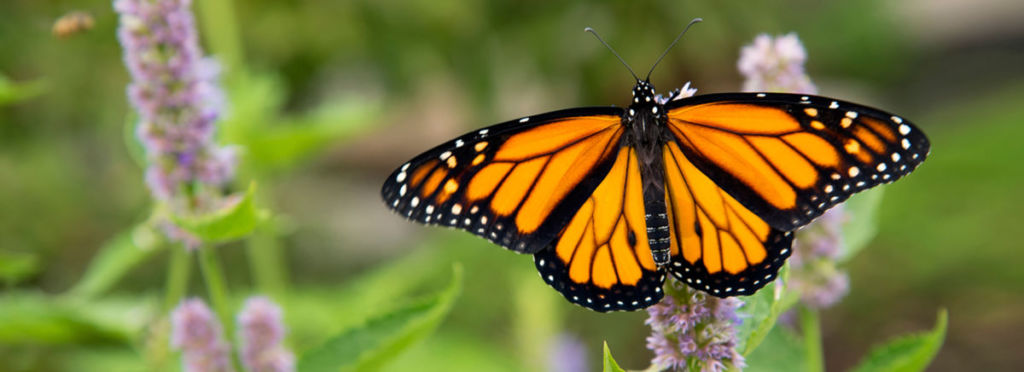The Great Monarch Migration
Posted on February 10, 2020 by Laura Lucky
Monarch butterflies, so named because they’ve been considered the “king of all butterflies,” have played a vital role in the Sonoran Desert ecosystem. Yet monarch populations have been declining steeply in the past decades, mainly due to development causing a loss of habitat.
The monarch butterfly is the only known butterfly to make a two-way migration with the seasons. They leave the northern U.S. and Canada in early fall for warmer climes south to escape the cold weather in which they wouldn’t survive. Their journey is a whopping 2,500- to 3,000-mile trek. They mainly winter in Mexico and parts of Southern California, and Arizona happens to be in their migration path. Yet scientists are recording alarming statistics of dwindling monarch populations. The population of monarchs wintering in California in January of 2019 was the lowest on record – an 85% decline from the previous year and a 99.4% decline from populations in the 1980s.
In February and March, the hibernating monarchs migrate back north and east. Yet if the environment can’t sustain their needs for the journey, we may experience lower and lower populations until they may be considered endangered. However, you can help play a role in assisting the butterflies with their crossing.
Monarchs can’t survive without the milkweed plant. It’s on these plants that they lay their eggs. The hatching caterpillars eat the milkweed to grow and the chrysalis attaches to a milkweed stem or leaf from which the butterflies emerge.
There are many varieties of milkweed plants, and several are indigenous to the Sonoran Desert. The Arizona Game & Fish Department has overseen the planting of milkweeds along the Arizona migration path, and residents are encouraged to plant milkweeds as well. Check with your homeowners association that they’re on the approved plant list, but they generally are allowed in most North Scottsdale subdivisions. Further, supplying a water source and flowering plants in your yard will also aid the butterflies in their survival. For more information and ways you can help, visit SWMonarchs.org.


